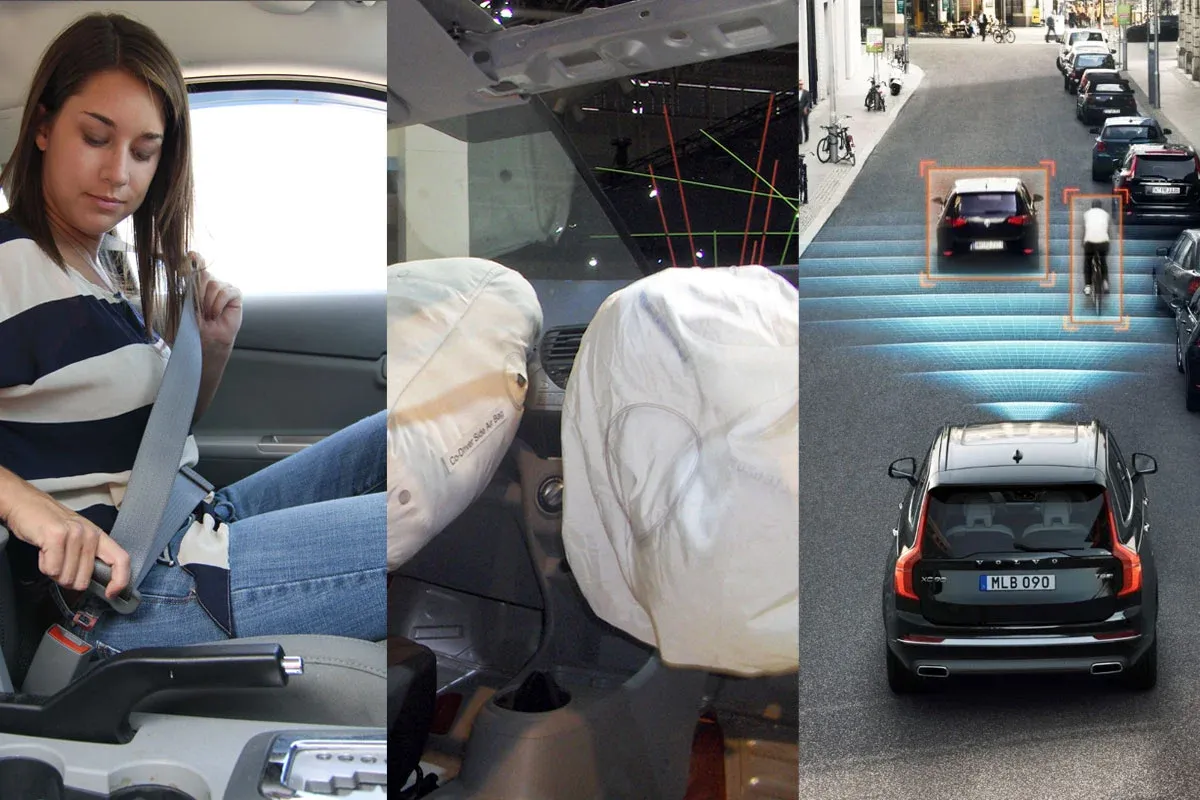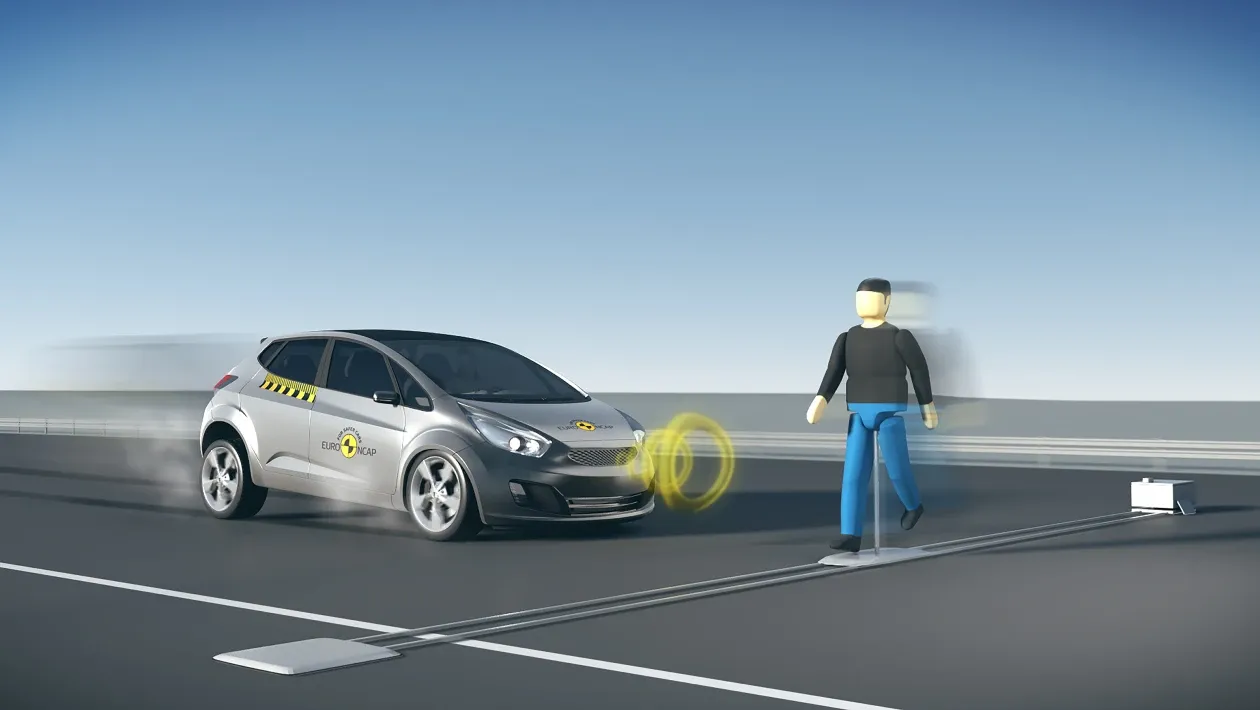The Evolution of Car Safety Features

Anúncios
The evolution of car safety features has transformed the automotive industry, turning vehicles from mere modes of transportation into life-saving machines.
Over the decades, advancements in technology and a deeper understanding of human physiology have led to innovations that protect drivers, passengers, and pedestrians alike.
This journey, marked by groundbreaking milestones, has not only reduced fatalities but also reshaped how we perceive safety on the road.
Anúncios
As consumer expectations evolve, manufacturers are continuously challenged to innovate and improve safety measures, reflecting a commitment to protecting lives.
This focus on safety is not only about compliance with regulations but also about fostering consumer trust and brand loyalty in a competitive market.
The Early Days: Basic Protections
In the early 20th century, cars were designed with little regard for safety.
The focus was on performance and aesthetics, leaving occupants vulnerable to even minor accidents.
The first significant step in the evolution of car safety features came in the 1950s with the introduction of the three-point seat belt by Volvo engineer Nils Bohlin.
This simple yet revolutionary design became the cornerstone of automotive safety, reducing the risk of fatal injuries by nearly 50%.
Following this, the 1960s saw increased public awareness of road safety, prompting advocacy groups to push for more stringent regulations.
This grassroots movement led to the establishment of safety standards that would shape future vehicle designs.
By the 1960s, governments began mandating seat belts, marking the first time regulatory bodies intervened to protect drivers.
However, this was just the beginning.
The 1970s saw the rise of crumple zones, which absorbed impact energy during collisions, and the introduction of airbags in the 1980s further enhanced occupant protection.
These innovations laid the foundation for modern safety systems.
+ Electric Cars vs. Gasoline Cars: Pros and Cons
The Digital Revolution: Smarter Cars
The 1990s and early 2000s ushered in a new era of safety technology, driven by advancements in electronics and computing.
Anti-lock braking systems (ABS) became standard, preventing wheels from locking up during emergency stops and allowing drivers to maintain control.
Electronic stability control (ESC) followed, reducing the risk of skidding and rollovers.
This period also witnessed the integration of more sophisticated computer systems into vehicles, allowing for real-time data processing and analysis.
As a result, manufacturers began to develop more responsive and adaptive safety features tailored to various driving conditions.
One of the most significant breakthroughs during this period was the development of advanced driver-assistance systems (ADAS).
Features like adaptive cruise control, lane-keeping assist, and automatic emergency braking began to appear in luxury vehicles before trickling down to mainstream models.
These systems relied on sensors, cameras, and radar to monitor the vehicle’s surroundings, effectively reducing human error—the leading cause of accidents.
According to a study by the Insurance Institute for Highway Safety (IIHS), vehicles equipped with forward collision warning and automatic braking systems saw a 50% reduction in front-to-rear crashes.
This data underscores the importance of integrating technology into the evolution of car safety features.
The Rise of Autonomous Safety
As we move further into the 21st century, the focus has shifted toward autonomous driving technologies.
While fully self-driving cars are still in development, semi-autonomous features are already making roads safer.
Tesla’s Autopilot, for instance, combines adaptive cruise control, lane-centering, and self-parking to create a seamless driving experience.
This integration of automation not only enhances convenience but also allows for a more relaxed driving experience, reducing stress for the driver.
As the technology matures, it is expected to significantly decrease the likelihood of accidents caused by human error.
However, the evolution of car safety features isn’t just about automation.
Vehicle-to-everything (V2X) communication is emerging as a game-changer, enabling cars to “talk” to each other and to infrastructure like traffic lights.
This technology can warn drivers of potential hazards, such as a car running a red light or a pedestrian crossing the street, before they become visible.
Such communication systems are anticipated to play a crucial role in reducing collisions and improving traffic flow.

Protecting Vulnerable Road Users
While much of the focus has been on protecting vehicle occupants, the evolution of car safety features has also prioritized pedestrians and cyclists.
Modern cars are equipped with pedestrian detection systems that use cameras and sensors to identify people in or near the road.
If a collision is imminent, the system can automatically apply the brakes.
This proactive approach not only protects vulnerable road users but also raises awareness among drivers regarding their surroundings.
Such technologies are increasingly becoming standard in new vehicles, reflecting a societal commitment to road safety for everyone.
Additionally, external airbags are being tested to reduce injuries to pedestrians in the event of a crash.
These airbags deploy from the hood or windshield, cushioning the impact and potentially saving lives.
This innovation highlights the automotive industry’s shift towards more inclusive safety measures that consider all road users.
++ Top 10 Most Anticipated Cars of 2025: New Releases in the Market
The Role of Data and Connectivity
The integration of big data and connectivity has further accelerated the evolution of car safety features.
Telematics systems, which collect and transmit data about a vehicle’s performance and driving behavior, are now commonplace.
Insurers use this data to offer personalized rates, while manufacturers use it to improve vehicle design and safety systems.
This data-driven approach allows for continuous improvement and adaptation of safety features based on real-world driving conditions.
Moreover, the collection of data can also inform public policy and infrastructure development, leading to safer roads overall.
For example, General Motors’ OnStar system not only provides emergency assistance but also monitors the vehicle’s health, alerting drivers to potential issues before they become serious.
This proactive approach to safety is a testament to how far we’ve come since the days of manual seat belts.
Furthermore, the potential for predictive analytics could lead to even more advanced safety features, capable of anticipating and mitigating risks before they occur.

The Future: A Safer Road Ahead
Looking ahead, the evolution of car safety features shows no signs of slowing down.
Innovations like biometric sensors, which monitor driver fatigue and health, are on the horizon.
Augmented reality (AR) windshields could provide real-time navigation and hazard alerts, while advanced materials like graphene could make cars lighter and stronger.
These futuristic technologies promise to enhance safety by providing drivers with critical information in an intuitive manner.
As these innovations develop, they will likely redefine the driving experience, making it safer and more enjoyable.
Moreover, the push toward electric vehicles (EVs) is driving new safety considerations.
EVs’ lower center of gravity reduces the risk of rollovers, and their lack of an internal combustion engine allows for more flexible crash structures.
However, the high-voltage batteries pose unique challenges, prompting manufacturers to develop new safety protocols.
This ongoing evolution indicates a future where safety is not just an add-on but an integral part of vehicle design.
For further insights into the future of automotive safety, check out The National Highway Traffic Safety Administration.
Tables: Milestones in Car Safety
Table 1: Key Milestones in Car Safety
| Year | Innovation | Impact |
|---|---|---|
| 1959 | Three-point seat belt | Reduced fatalities by 50% |
| 1970 | Crumple zones | Absorbed impact energy, protecting occupants |
| 1980 | Airbags | Provided additional cushioning during crashes |
| 1990 | Anti-lock braking systems (ABS) | Prevented wheel lockup, improved control |
| 2000 | Electronic stability control (ESC) | Reduced skidding and rollovers |
| 2010 | Advanced driver-assistance systems | Minimized human error |
| 2020 | Vehicle-to-everything (V2X) | Enabled real-time hazard warnings |
Table 2: Reduction in Accidents Due to Safety Features
| Safety Feature | Reduction in Accidents |
|---|---|
| Forward collision warning | 27% |
| Automatic emergency braking | 50% |
| Lane-keeping assist | 21% |
| Blind-spot monitoring | 14% |
Conclusion
The evolution of car safety features is a testament to human ingenuity and our commitment to preserving life.
From the humble seat belt to cutting-edge autonomous systems, each innovation has brought us closer to a future where road accidents are a rarity rather than a daily occurrence.
As technology continues to advance, the line between driver and vehicle will blur, creating a safer, more connected world for everyone.
The journey is far from over, but one thing is clear: the road ahead is paved with promise.
